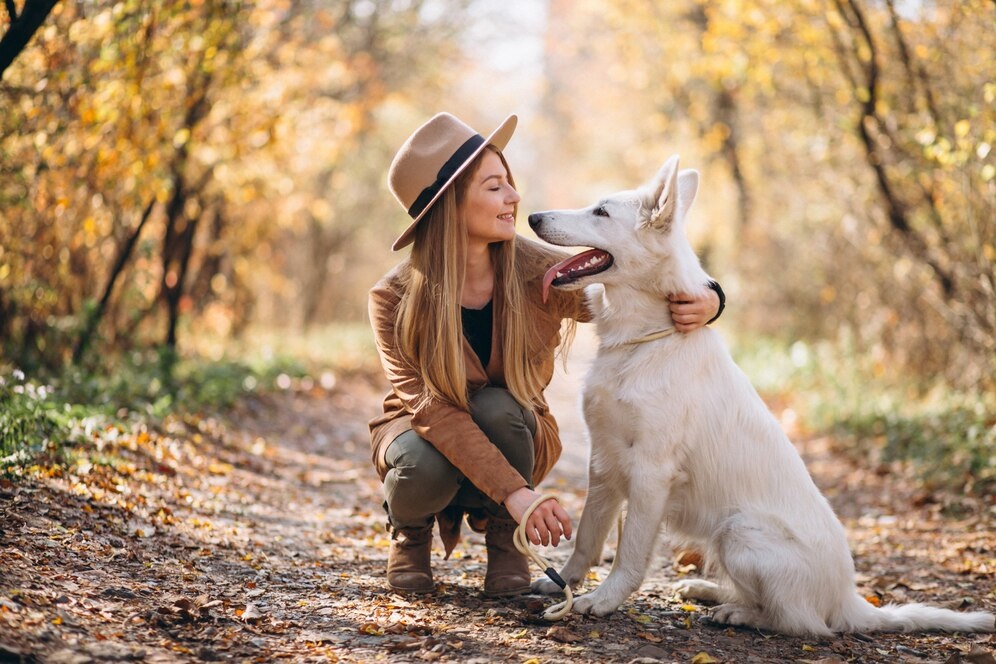Training your dog is not just about teaching them commands; it’s about building a strong bond, ensuring their safety, and enhancing their quality of life. Whether you’re starting with basic commands or aiming to master advanced tricks, a structured approach to training will yield the best results. This guide covers essential techniques and tips to help you train your dog effectively, from foundational commands to impressive tricks.
1. The Importance of Training
Training is crucial for several reasons:
- Safety: Well-trained dogs are more likely to respond to commands, which can prevent dangerous situations.
- Behavior Management: Training helps manage and correct unwanted behaviors.
- Mental Stimulation: Engaging in training provides mental exercise, which is important for a dog’s well-being.
- Bonding: Training strengthens the bond between you and your dog through positive interaction.
2. Getting Started with Basic Commands
1. Sit
How to Teach:
- Step 1: Hold a treat close to your dog’s nose.
- Step 2: Move your hand up, allowing your dog’s head to follow the treat, which will naturally cause their bottom to lower.
- Step 3: Once they are in a sitting position, say “sit” and give them the treat immediately.
- Step 4: Repeat the process several times and gradually introduce the command without the treat.
Tips:
- Consistency: Always use the same command word and hand signal.
- Positive Reinforcement: Reward your dog immediately after they follow the command to reinforce the behavior.
2. Stay
How to Teach:
- Step 1: Ask your dog to sit.
- Step 2: Open your palm in front of them and say “stay.”
- Step 3: Take a step back. If your dog stays, return to them, reward, and praise.
- Step 4: Gradually increase the distance and duration.
Tips:
- Short Sessions: Keep training sessions short to maintain your dog’s interest and avoid frustration.
- Gradual Progression: Increase the difficulty level gradually as your dog becomes more reliable with the stay command.
3. Come
How to Teach:
- Step 1: Put your dog on a leash and walk a short distance away.
- Step 2: Call your dog using a cheerful tone, “come,” and gently pull on the leash.
- Step 3: When they come to you, reward them with treats and praise.
- Step 4: Practice in different locations and gradually increase the distance.
Tips:
- Avoid Negative Associations: Never call your dog to punish them; this can create a negative association with the command.
- Consistency: Practice regularly and reward immediately to reinforce the behavior.
3. Moving to Advanced Tricks
1. Roll Over
How to Teach:
- Step 1: Start with your dog in a lying down position.
- Step 2: Hold a treat near their nose and slowly move it towards their shoulder to encourage them to roll onto their side.
- Step 3: Once they are on their side, move the treat around their back to encourage them to roll completely over.
- Step 4: Reward them once they complete the roll.
Tips:
- Patience: This trick can take time. Be patient and use gentle encouragement.
- Positive Reinforcement: Consistently reward your dog to encourage them to repeat the trick.
2. Play Dead
How to Teach:
- Step 1: Ask your dog to lie down.
- Step 2: Gently roll them onto their side and say “play dead” or “bang” while showing a hand signal (e.g., pointing a finger like a gun).
- Step 3: Hold the position for a few seconds and reward them.
- Step 4: Gradually reduce the need for physical assistance as they learn the command.
Tips:
- Practice in Short Sessions: Short, frequent training sessions work better for complex tricks.
- Consistency: Use the same command and hand signal each time.
3. Fetch
How to Teach:
- Step 1: Show your dog the toy and encourage them to grab it by using treats or play.
- Step 2: Once they pick up the toy, call them back to you and use the command “bring it here.”
- Step 3: Reward them when they bring the toy back. Gradually introduce the release command, such as “drop it,” and reward when they let go.
Tips:
- Use High-Value Toys: Choose toys that your dog loves to keep them motivated.
- Consistency: Practice regularly to reinforce the fetch command.
4. Addressing Common Training Challenges
1. Lack of Focus
Solution:
- Limit Distractions: Train in a quiet environment to help your dog focus.
- Use High-Value Rewards: Use treats or toys that your dog finds particularly motivating.
- Short Sessions: Keep training sessions brief but frequent to maintain their interest.
2. Inconsistency
Solution:
- Be Consistent: Use the same commands, hand signals, and rewards each time you train.
- Family Involvement: Ensure everyone in the household uses the same commands and training methods.
3. Behavioral Regression
Solution:
- Revisit Basics: If your dog regresses, return to basic commands and gradually work up to advanced tricks.
- Stay Positive: Use positive reinforcement and avoid punishment, which can hinder progress.
5. Tips for Successful Training
- Patience and Persistence: Training takes time. Be patient and persistent, and celebrate small victories.
- Positive Reinforcement: Always use positive reinforcement techniques to encourage good behavior.
- Clear Commands: Use clear and consistent commands to avoid confusing your dog.
- Regular Practice: Regular practice helps reinforce commands and tricks, making them second nature for your dog.
Conclusion
Training your dog is a rewarding experience that enhances your relationship and ensures a well-behaved companion. Starting with basic commands and gradually progressing to advanced tricks allows you to build a strong foundation and achieve impressive results. By employing patience, consistency, and positive reinforcement, you can successfully teach your dog a wide range of commands and tricks, making training an enjoyable and fulfilling process for both you and your furry friend.

